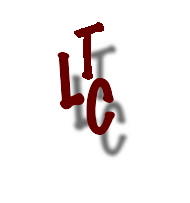Crusoe’s dog(s): Woolf and Derrida (between beast and sovereign)
Résumé
An exploration of canine aesthetics in Woolf, Derrida and Defoe, engaging with Derrida's reading of Heidegger and Celan.This essay considers Derrida’s passing allusion to Woolf’s essay ‘”Robinson Crusoe”’ (1926; 1932), in The Beast and the Sovereign 2 (2011), in which he reads Defoe’s Robinson Crusoe alongside Heidegger’s "Seminar on World, Finitude, and Solitude"(beast 31). He embarks us on a heady tour of these two heterogeneous works, touching on many other works by Rousseau, Pascal, Montaigne, Marx, Celan, Lacan, Joyce and Woolf et al.. Whereas Derrida focuses ultimately on the parrot who forms part of Crusoe's animal court on the island, Woolf, in her essay on Robinson Crusoe, drafted in the manuscript of her own island novel, To the Lighthouse, points up Defoe's differing representation, and Crusoe's differing treatment, of cats and dogs. Derrida's 'psittacist' reading is opened up to Woolf's feminist canine reading.
Mots-clés

